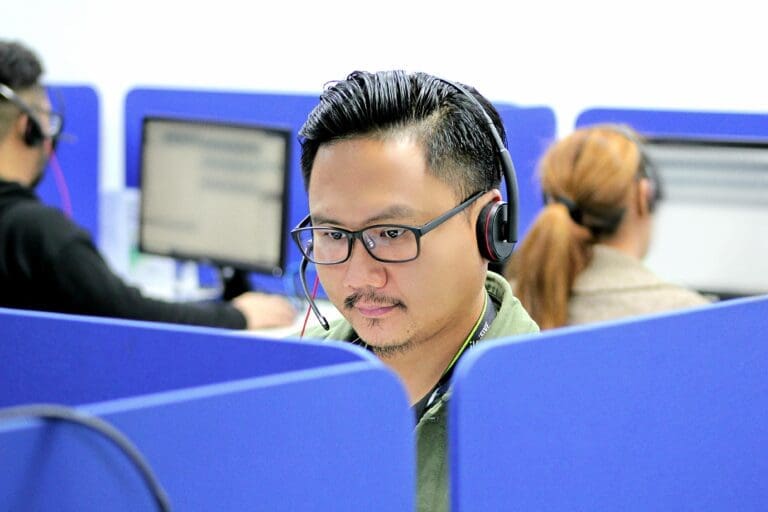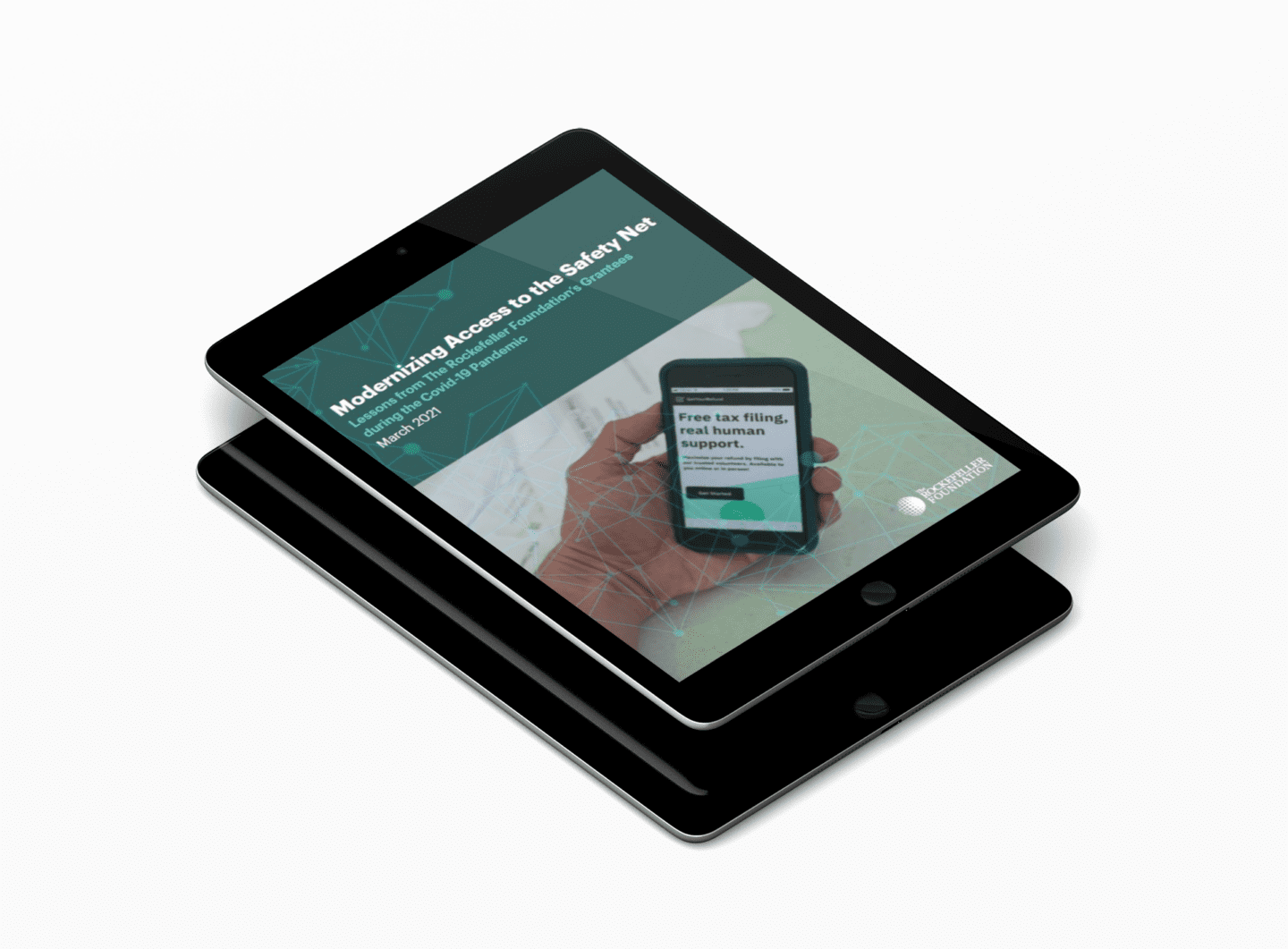The Pandemic Increases Need for Better Benefits Access
When the Covid-19 lockdowns began, millions of people were plunged into unemployment and food or housing insecurity. At its peak, over 75 percent of Americans were under stay-at-home orders. Many social agencies had to close or curtail operations.
Goodbye, paper documents passed across a counter. Hello, data accessed and processed from home computers or over the phone. It wasn’t a choice anymore. It was a necessity.

But the pandemic-triggered economic crisis revealed gaping holes in many agencies’ websites and data capabilities. Simultaneously, our grantees’ remote data and technology work revved up. In some cases, the ability to guide people through data-supported systems marked the line between life and death because, as Benefits Data Trust (BDT) CEO Trooper Sanders recently noted, inadequate benefits often foretell poorer health outcomes.
Foundation grantees like BDT, Code for America and the start-up U.S. Digital Response leapt into action, replacing confusing and brittle systems with friendly, resilient ones that could reach more people. In 2020, these projects secured more than $200 million in benefits for close to 100,000 people across at least 36 states, and helped millions more through policy change, training, and guidance.
Our grantees discussed their innovative work in our RF Breakthrough virtual panel discussion, arguing persuasively that the individual must be put at the center of the benefits process. We captured the lessons they learned in the heat of battle against Covid-19 and its economic impacts, recognizing that they will help people both in our new normal, and during future crises.
Coalition Formed to Continue Using Data to Improve Benefits Access
A better safety net will require across-the-board effort. Changing the way people access benefits will require action at the federal level, and in 56 states and territories. With that in mind, several of our grantees, including New America, Benefits Data Trust, Code for America, and the Beeck Center for Social Impact and Innovation at Georgetown University recently joined together to work toward a shared goal as part of the Digital Benefits Coalition.

All of these organizations use digital tools and data extensively, but they seek to improve everyone’s experience even if they never use a computer or the internet. After all, millions of Americans either don’t have internet access or aren’t comfortable using it—BDT, for instance, is testing Artificial Intelligence-enabled chatbots to meet the needs of people who want 24/7 on demand self-service support via mobile text.
Digital tools are about giving people more, better options, not taking them away. They can make in-person or over-the-phone assistance more effective by allowing a social worker to focus on the problem instead of the paperwork. We’ve seen how data science can help a social worker find and reach a person in need who is too scared or shocked to seek help through any mode.
More to be Done
Today’s story, however, is not only one of celebration. It’s a rallying cry. There’s more to be done.
It starts with the federal government publishing updated estimates about potentially eligible people who aren’t being served: not only numbers, but demographics. We must define the system’s failures and inequities before we can tackle them. At all levels of government, agencies should be collecting, using, and publishing meaningful metrics that speak to service quality, such as the speed with which applications are processed, the number of incomplete applications, and client satisfaction metrics.
We also need federal and state interagency groups focused on how to combine expertise to close the coverage gaps. And we should be looking for ways to consolidate all benefits application into one place, perhaps through a single national portal, instead of forcing people in need to search and file the same paperwork repeatedly.
The last barrier to an improved social safety net is a big but critical ask. We need to shift from an entrenched mindset which views benefits as charity, and prioritizes blocking the “undeserving” toward one that views them as an investment into a more equitable society.
Approaching applicants as adversaries has real costs—it makes the process more difficult for everyone, keeps legitimately eligible people from getting aid, and distracts from stopping the organized criminal operations that really did attack safety net systems during the pandemic. Our safety net exists to help our neighbors and promote a more humane, productive, and resilient society. Our first mission should be to make sure people can get help.
Our vision is that improved data and technology systems in support of benefits will help create a more just post-pandemic world. My hope is that our work and the work of our grantees will have contributed.
Related Updates

Modernizing Access to the Safety Net
The social safety net in the United States is meant to not only give people in need the means to get by, but is an investment in a humane and productive society. However, access to the safety net remains a perennial problem. “Modernizing Access to the Safety Net: Lessons from The Rockefeller Foundation’s Grantees during […]
More